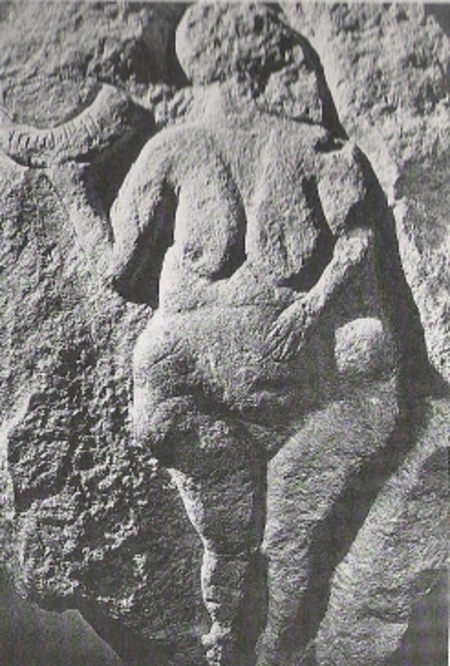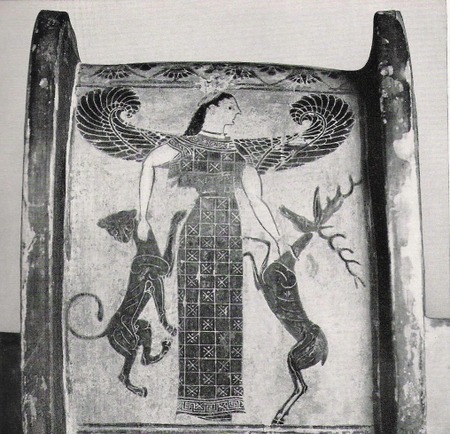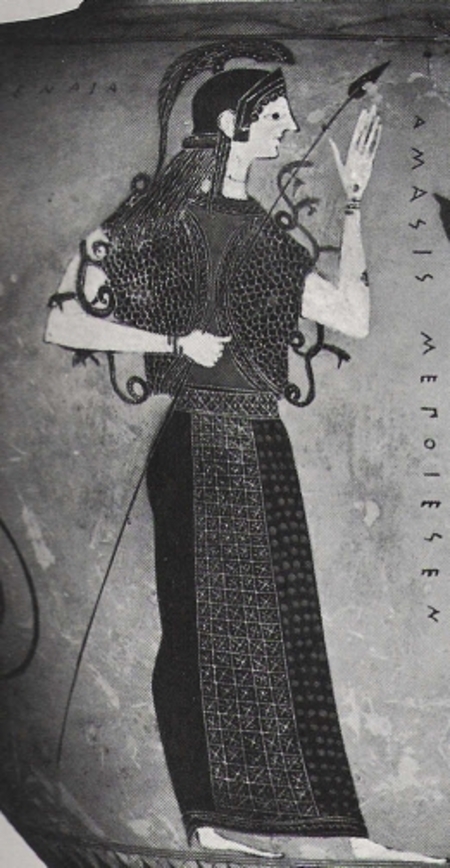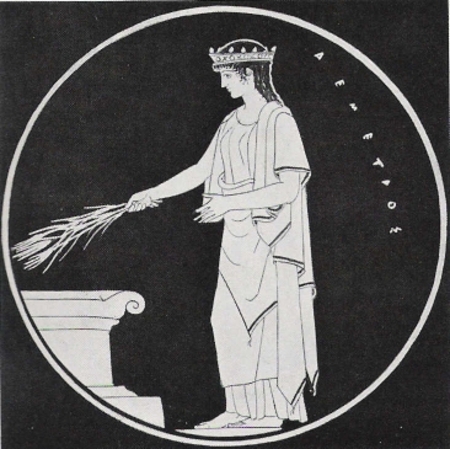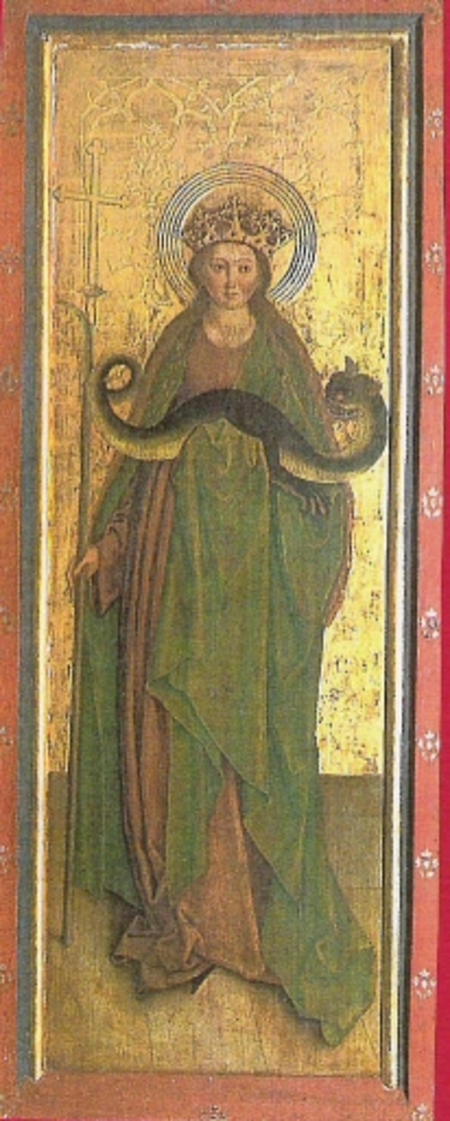Matriarchal Mythology and Symbolic
The examination of matriarchal mythology reveals a basic structure which exists in the entire cultural area that was indo-europeanized later, i. e. India, Persia, Egypt, in the Mediterranean Area, and in Europe. It shows the pattern of the Great Goddess in her threefold aspects as Maiden, Mother and Crone, who resides in the three zones of the world: Heaven, Earth and Underworld. Heaven is the home of the light-bringing, youthful, atmospheric Goddess, the Maiden. On Earth, the Mother Goddess resides; she fertilizes land and sea, plants, animals and humans with her erotic powers and brings forth life. The Crone Goddess lives in the Underworld; she is the deity of eternal descent and renewal, Goddess of Death and Rebirth. Each of these three aspects of the Great Goddess has a range of typical terrestrial and cosmic symbols, of holy plants and animals, and of magical tools, for ex. bow and arrow from silver (Maiden Goddess), the red apple of love (Mother Goddess), spindle and thread of fate (Crone Goddess).
The consort and partner of the threefold Great Goddess is the Holy King or Heros (Greek). His dimensions are more limited. He represents humankind with whom the Goddess, personified by her priestess, bonds, in order to bestow new life upon her people. In the same way as humankind is relative to the all-encompassing nature of earth and universe, each of the Holy King’s phases is relative to the Goddess. It is through her that he experiences the fate of humans: he is first granted access to status (Initiation); he is integrated in her all-embracing love and fertility (Sacred Marriage); and he is sent into the underworld to experience for himself the passages of transformation (Death and Rebirth). In this worldview, death is not seen as final, but life an death are phases in the eternal cosmic cycles, which return again and again.
This double pattern of matriarchal mythology (Goddess and Heros) is not an abstract schematic structure, but is the guideline of the cultic festivals which were celebrated throughout the cycle of the year. These festivals followed the seasons: Initiation was celebrated at the beginning of spring, Sacred Marriage at the beginning of summer, the descent into the underworld at the beginning of fall, the rebirth or return from the depth at the beginning of winter. In that way they followed the most important astronomical dates of the year: the Equinoxes of spring and fall, and the Solstices of summer and winter. Many relics of this great festival cycle of the seasons continued to be present in later patriarchal religions, including Christianity.
The double pattern of matriarchal mythology includes the worldview of matriarchal cultures; it is the deep structure of the great diversity of matriarchal mythologies in the vast cultural area mentioned above. Originating from matriarchal cultures, it was transmitted in the international Fairy Tales of Magic, which are not fictional narratives, but deteriorated, anonymous matriarchal myths. In spite of the later patriarchal deformation, distortion, and disintegration of their structure and symbols, matriarchal mythology can still be perceived in the international Fairy Tales of Magic.
Read more in:
 | Heide Goettner-Abendroth The Goddess and Her Heros. E-book edition: Please find here the complete edition online, it is free of charge |


